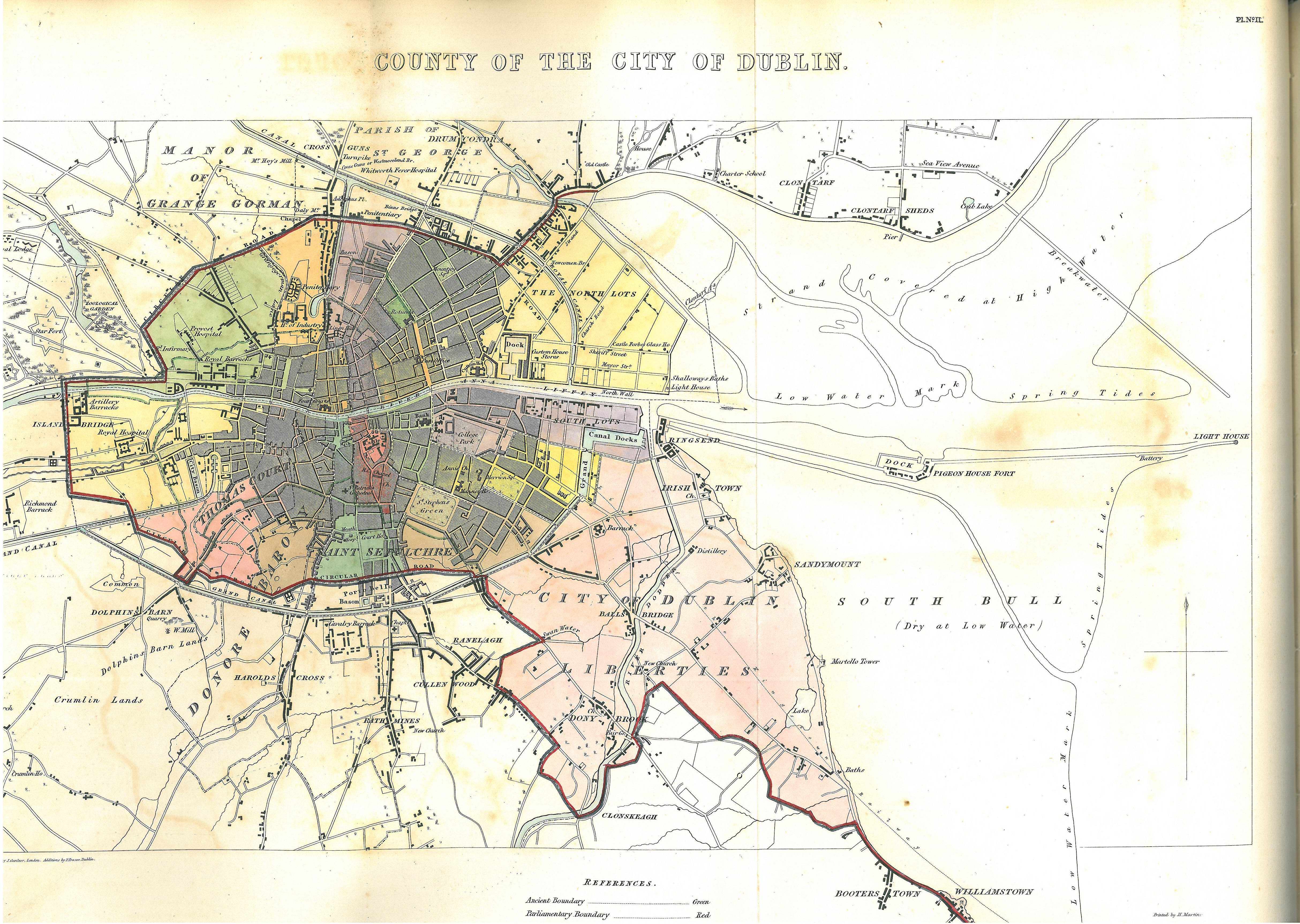Dublin (UK Parliament Constituency) on:
[Wikipedia]
[Google]
[Amazon]
Dublin City was an Irish
 The city of Dublin was accounted a
The city of Dublin was accounted a
Part of the ''Library Ireland: Irish History and Culture'' website containing the text of ''A Topographical Directory of Ireland'', by Samuel Lewis (a work published by S. Lewis & Co of London in 1837) including an article on the city of Dublin
{{Dublin constituencies Westminster constituencies in County Dublin (historic) Constituencies of the Parliament of the United Kingdom established in 1801 Constituencies of the Parliament of the United Kingdom disestablished in 1885
Borough constituency
In the United Kingdom (UK), each of the electoral areas or divisions called constituencies elects one member to the House of Commons of the United Kingdom, House of Commons.
Within the United Kingdom there are five bodies with members elected by ...
in the House of Commons of the United Kingdom of Great Britain and Ireland. It comprised the city of Dublin in the county of Dublin, and was represented by two Members of Parliament from its creation in 1801 until 1885.
In 1885, Dublin City was split into four divisions which were separate single member constituencies: Dublin College Green, Dublin Harbour, Dublin St Stephen's Green and Dublin St Patrick's
Dublin St Patrick's, a division of Dublin, was a borough constituency in Ireland. It returned one Member of Parliament (MP) to the United Kingdom House of Commons from 1885 until 1922.
From the dissolution of 1922, the area was no longer re ...
.
Boundaries
 The city of Dublin was accounted a
The city of Dublin was accounted a county of itself
A county corporate or corporate county was a type of subnational division used for local government in England, Wales, and Ireland.
Counties corporate were created during the Middle Ages, and were effectively small self-governing county-empowere ...
, although it remained connected with County Dublin for certain purposes. ''A Topographical Directory of Ireland'', published in 1837, describes the Parliamentary history of the city.
The city returns two members to the Imperial parliament; the right of election, formerly vested in the corporation, freemen, and 40s. freeholders, has been extended to the £10 householders, and £20 and £10 leaseholders for the respective terms of 14 and 20 years, by the act of the 2nd of William IV., cap. 88. The number of voters registered at the first general election under that act was 7041, of which number, 5126 voted. The limits of the city, for electoral purposes, include an area of 3538 statute acres, the boundaries of which are minutely detailed in the Appendix; the number of freemen is about 3500, of whom 2500 are resident and 1000 non-resident, and the number of £10 houses is 16,000 : the sheriffs are the returning officers.The boundary from 1832, defined in the Parliamentary Boundaries (Ireland) Act 1832 (c. 89 2& 3 Will. 4), was as follows.
The County of the City of Dublin, and such Parts of the County at large as lie within the Circular Road.
Members of Parliament
Elections
''From 1832 (when registers of electors were first prepared) a turnout figure is given, for the percentage of the registered electors who voted. If the number of registered electors eligible to take part in a contested election is unknown, then the last known electorate figure is used to calculate an estimated turnout. If the numbers of registered electors and electors taking part in the poll are known, an exact turnout figure is calculated. In two member elections (in which an elector could cast one or two votes as he chose), where the exact number of electors participating is unknown, an estimated turnout figure is given. This is calculated by dividing the total number of votes cast by two. To the extent that electors used only one of their votes the estimated turnout figure is an underestimate.''Elections in the 1800s
Elections in the 1810s
Elections in the 1820s
Elections in the 1830s
On petition, Harty and Perrin were unseated, causing a by-election. * On petition, O'Connell and Ruthven were unseated and Hamilton and West were declared elected on 16 May 1836Elections in the 1840s
West's death caused a by-election. On petition, the poll was amended and 92 votes were struck off Reynolds, although this did not cause him to be declared unelected.Elections in the 1850s
Elections in the 1860s
Guinness' death caused a by-election.Elections in the 1870s
On petition, Guinness was unseated.Elections in the 1880s
Notes
References
*''The Parliaments of England'' by Henry Stooks Smith (1st edition published in three volumes 1844–50), 2nd edition edited (in one volume) by F.W.S. Craig (Political Reference Publications 1973) * *External links
Part of the ''Library Ireland: Irish History and Culture'' website containing the text of ''A Topographical Directory of Ireland'', by Samuel Lewis (a work published by S. Lewis & Co of London in 1837) including an article on the city of Dublin
{{Dublin constituencies Westminster constituencies in County Dublin (historic) Constituencies of the Parliament of the United Kingdom established in 1801 Constituencies of the Parliament of the United Kingdom disestablished in 1885